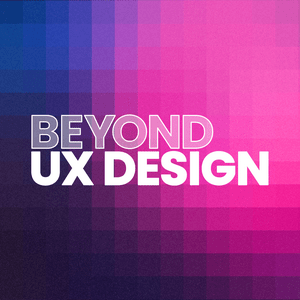Not Your Parents’ Career: Why Every Designer Needs a Plan B With Edward Chechique
This week, Edward Chechique joins me to discuss rethinking design careers, ditching outdated career advice, and learning how to survive (and thrive) in 2025’s chaotic job market. We talk layoffs, AI, content creation, side hustles, and redefining what it means to be a UX pro today.What if your job title doesn't define your career? What if your "career" wasn’t the point at all?We were told that if we worked hard, got good at UX, and built a solid portfolio, we’d be fine. But in 2025, none of that seems to be working. In this episode, I sit down with Edward Chechique to talk about what happens when the traditional path to career success just… stops working.Edward has been laid off, ghosted, and judged by hiring managers who didn’t get it. So he stopped waiting. He built his own path—from writing and content creation to launching products and teaching others how to use AI to work smarter. This isn’t a fairytale story about becoming a millionaire. It’s about regaining your agency and deciding what you want from your career.If you're tired of trying to fit into boxes that never seemed to fit quite right, this episode is your permission slip to stop waiting for the industry to come save you—and start building a version of success that actually works for you.Topics:• 02:46 - Redefining Careers in Design• 03:17 - Interview with Edward Chechique• 04:59 - Edward's Journey in Design• 09:10 - Navigating the Job Market• 13:32 - Adapting and Diversifying Skills• 16:24 - Entrepreneurial Mindset and Self-Employment• 27:10 - Challenges and Realities of Self-Employment• 30:38 - Entrepreneurial Upbringing vs. Traditional Employment• 31:55 - Navigating Financial Uncertainty• 33:33 - Saving Strategies and Lifestyle Choices• 38:49 - Cultural Shifts and Economic Impact• 41:42 - Closing ThoughtsHelpful Links:• Connect with Edward on LinkedIn• Watch Edward on YouTube• Follow Edward on Medium---Thanks for listening! We hope you dug today’s episode. If you liked what you heard, be sure to like and subscribe wherever you listen to podcasts! And if you really enjoyed today’s episode, why don’t you leave a five-star review? Or tell some friends! It will help us out a ton.If you haven’t already, sign up for our email list. We won’t spam you. Pinky swear.---Support our sponsors!Ok web designers. Let’s talk about the “c” word—creative burnout.You’re working on a site for a really big client, but between resourcing, feedback, tight budgets and even tighter deadlines—it doesn’t make the cut. Wix Studio helps close that gap, so you can deliver your vision with less friction. Built for agencies and enterprises, you get total creative control over every last pixel. With no-code animations, AI-powered tools, reusable design assets, advanced, intuitive layout tools and a Figma to Wix Studio integration, you can design the way you want to and deliver when you need to.And if you’re worried about the learning curve eating into time you don’t have—don’t be. Wix Studio is intuitive by design, so your entire team can hit the ground running.For your next project, check out wixstudio.com
